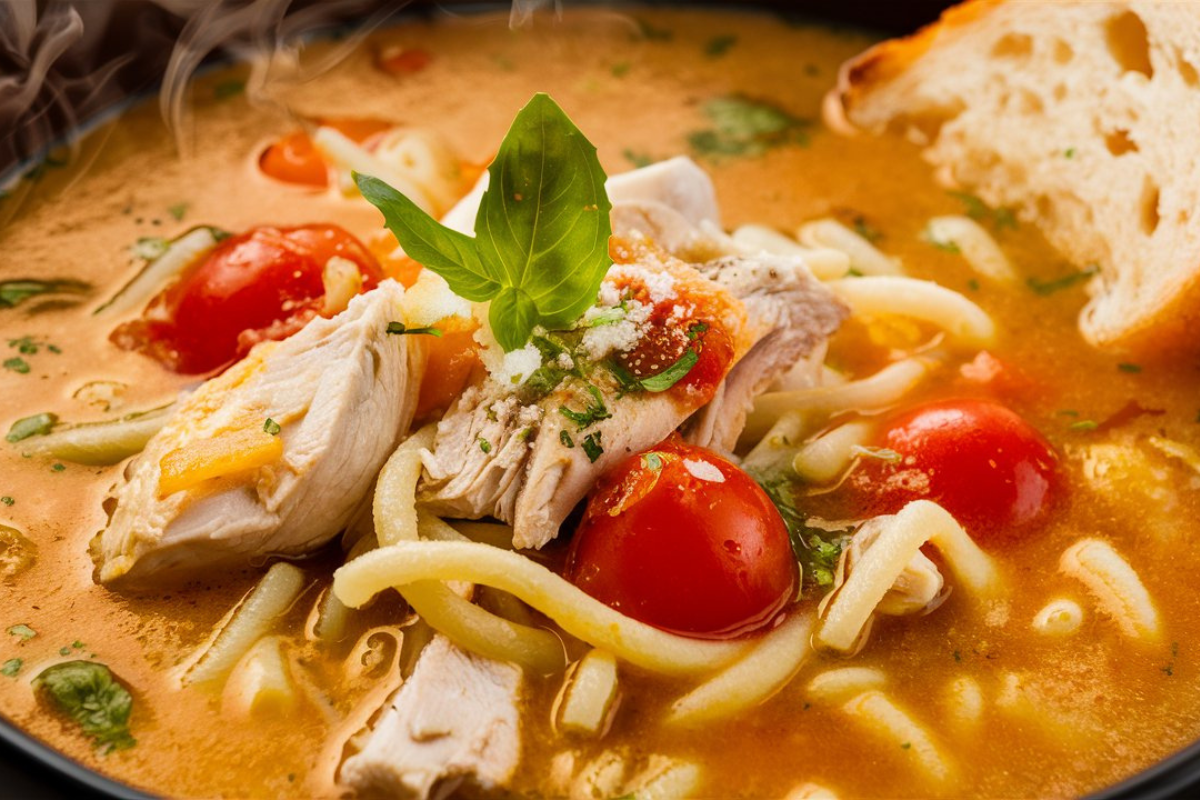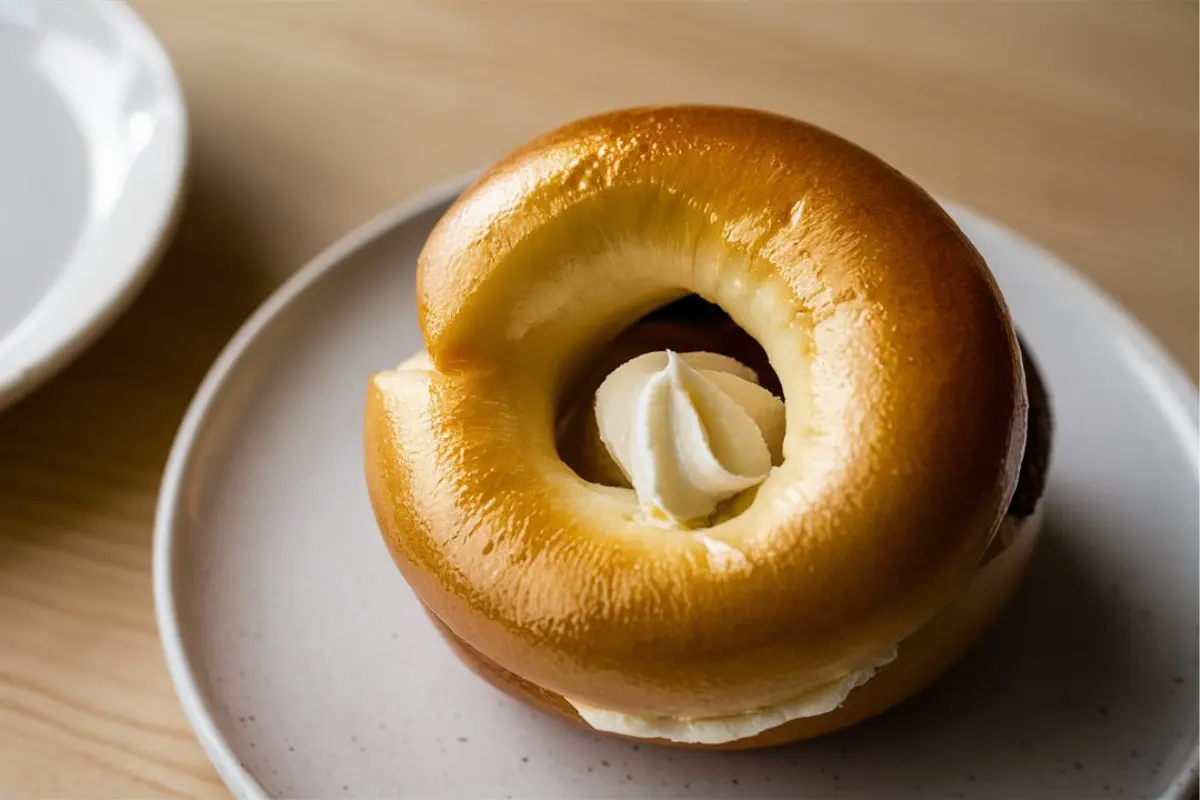Introduction to Making Tartar Sauce with Just Four Ingredients
Whether you’re a seasoned chef or a culinary novice, making your own tartar sauce can seem like a gourmet challenge. However, it’s surprisingly simple! With just four staple ingredients and a few minutes, you can whip up a batch of delicious, creamy tartar sauce. This sauce is perfect for enhancing your favorite seafood dishes. This article will guide you through the easy steps to create your own tartar sauce. It will offer customization tips and answer common questions to ensure your sauce is a hit every time.
Introduction to Tartar Sauce
Ah, 4 ingredient tartar sauce—a true classic in the world of condiments, often associated with seafood but versatile enough for much more. Making 4 ingredient tartar sauce at home with just four simple ingredients is not only economical but also allows for a fresher, tastier addition to your meals. This guide dives into the simplicity of creating delicious 4 ingredient tartar sauce that even a kitchen novice can master. By following this easy recipe, you can whip up 4 ingredient tartar sauce in no time, perfect for enhancing your favorite dishes. Whether you’re serving fish, fries, or just looking for a tasty dip, this 4 ingredient tartar sauce is sure to impress. Explore the rich flavors and easy preparation of homemade 4 ingredient tartar sauce and discover how it transforms your culinary creations. With each spoonful, this 4 ingredient tartar sauce adds a special touch to any meal.
While exploring the simplicity of creating delicious 4 ingredient tartar sauce, understanding its origins reveals a rich culinary history that dates back to French cuisine. Learn more about the fascinating history of tartar sauce The Fishy History of Tartar Sauce
The Appeal of Homemade Sauce
Why go homemade? Well, for starters, you know exactly what’s going into your food. No hidden preservatives or unfamiliar additives—just clear, simple ingredients. Moreover, the process of making tartar sauce is incredibly straightforward and quick, taking no more than five minutes of your time. It’s a fantastic way to add a personal touch to your dishes, ensuring everything from fish and chips to gourmet crab cakes feels a bit more special.
What You’ll Learn
By the end of this article, you’ll not only know how to make basic tartar sauce but also understand how to tweak it to perfection according to your taste preferences. Whether you prefer a tangy zing or a mild flavor, this sauce can be customized in numerous ways to complement any dish it accompanies. Let’s get started by exploring the ingredients you’ll need to create this delightful sauce.
Ingredients Overview
When it comes to making tartar sauce, the beauty lies in its simplicity. With just four key ingredients, you can create a condiment that’s robust in flavor and perfectly complements a variety of dishes. Let’s break down each component and explore some optional additions for those who like to experiment.
Detailed Description of Each Ingredient
Mayonnaise: The Base
Mayonnaise serves as the creamy foundation of tartar sauce. Opting for high-quality mayonnaise can significantly enhance the flavor of your sauce. Whether you prefer a store-bought variety for convenience or a homemade version for a touch of authenticity, mayonnaise is essential for achieving the silky texture that tartar sauce is known for.
Pickle: The Crunch
Pickles add a necessary crunch and tang to the sauce, balancing out the creaminess of the mayonnaise. Diced into fine pieces, pickles inject a sharp zest that is unmistakable in a good tartar sauce. For a different twist, you can substitute traditional pickles with capers or gherkins, depending on your taste preferences.
Mustard: The Kick
Mustard introduces a subtle kick, elevating the tartar sauce from simple to sublime. While whole grain mustard is commonly used for its texture and mild heat, you can also experiment with Dijon mustard for a smoother finish or even a dash of horseradish mustard for those who favor a bolder taste.
Dill: The Herbaceous Touch
Fresh dill is the final touch, lending a fresh, herbaceous layer to the sauce. The lightness of dill contrasts beautifully with the other ingredients, enhancing the overall freshness of the dish. If dill isn’t to your liking or simply isn’t available, fresh parsley can be a fantastic substitute, offering a slightly different but equally delightful flavor profile.
Customizable Options for the Adventurous
While the classic four ingredients stand well on their own, the versatility of tartar sauce allows for various additions and tweaks. Consider squeezing in some lemon juice for extra zest, or adding a pinch of garlic powder for depth. For those with a sweet tooth, a drizzle of honey can soften the tanginess, while a sprinkle of paprika can add both color and a gentle heat.
This exploration of ingredients shows just how easy and adaptable making tartar sauce can be. With these building blocks, you’re well on your way to creating a condiment that not only tastes great but also adds a personal flair to your meals.
Step-by-Step Recipe
Creating your own tartar sauce is a breeze with this straightforward, no-fuss recipe. By following these simple steps, you’ll have a delightful condiment ready to enhance any seafood dish or serve as a dipping sauce for a wide array of appetizers.
Preparation Steps
- Chop the Ingredients: Begin by finely chopping the pickles and dill. This not only ensures that each bite has a balanced flavor but also helps to blend the ingredients smoothly with the mayonnaise and mustard.
- Mix the Base: In a medium bowl, combine half a cup of mayonnaise with a teaspoon of whole grain mustard. Stir these together until they form a consistent base.
- Add Flavor and Texture: To the mayo-mustard mixture, add the chopped pickles and dill. If you’re using any additional ingredients like lemon juice or spices, now is the time to fold them in. Mix everything together until fully incorporated.
- Season to Taste: Give your tartar sauce a taste and adjust the seasoning as needed. You might want to add a bit more mustard for heat, or perhaps a touch more pickle for extra zing. Remember, the key is to balance the flavors to your liking.
- Chill Before Serving: For the best flavor, cover the bowl with plastic wrap and let your tartar sauce chill in the refrigerator for at least 30 minutes.
Serving Suggestions
Tartar sauce traditionally pairs wonderfully with fish and chips, but its use extends far beyond that. Try it with:
- Grilled or Fried Seafood: It’s a perfect complement to shrimp, calamari, and oysters.
- Sandwiches and Burgers: Spread it on a fish burger or a chicken sandwich for an extra layer of flavor.
- Vegetable Dips: Fresh vegetables dipped in tartar sauce make for a refreshing snack or appetizer.
This simple yet versatile recipe ensures that your homemade tartar sauce is not only easy to prepare but also a delicious addition to various dishes. With these steps, you’ll impress guests and satisfy your culinary creativity.
Customization Tips
One of the joys of homemade tartar sauce is the ability to tailor it to your personal taste. Whether you’re aiming for a specific flavor profile or adapting it to dietary needs, these customization tips will help you tweak your tartar sauce to perfection.
Adjusting Flavors
Modify the Tanginess
If the classic tang of tartar sauce is too sharp for your palate, consider reducing the amount of mustard or pickles. Alternatively, adding a small spoonful of honey or a sprinkle of sugar can balance out the acidity and provide a subtle sweetness.
Enhance the Creaminess
For a creamier texture, you can increase the mayonnaise portion or add a dollop of Greek yogurt. This not only thickens the sauce but also adds a smooth, velvety consistency that’s especially good on sandwiches and burgers.
Spice It Up
For those who enjoy a bit of heat, incorporating a dash of cayenne pepper, a spoonful of hot sauce, or even some freshly cracked black pepper can add a warm spice that livens up the sauce.
Herbal Variations
Experiment with Herbs
While dill is traditional, don’t shy away from trying other herbs. Tarragon can offer a slightly sweeter, anise-like flavor, while chopped parsley provides a mild, fresh taste that doesn’t overpower. Mixing in some finely chopped chives can also add a mild oniony bite which complements the creamy base beautifully.
Dietary Adaptations
Low-Fat Options
For a healthier version, opt for low-fat mayonnaise or substitute part of the mayo with yogurt. This alteration maintains the creamy texture while cutting down on calories and fat.
Vegan Variations
Vegan mayonnaise is an excellent substitute for traditional mayo, allowing you to keep the vegan-friendly status of your tartar sauce without compromising on taste or texture.
Adding Crunch and Texture
To vary the texture and add an extra element of crunch, consider including finely diced celery or onions. These not only provide a pleasant crunch but also enhance the overall depth of flavor.
By embracing these customization tips, you can create a tartar sauce that not only meets your culinary standards but also elevates your dishes. Experimenting with these suggestions will help you discover your perfect blend of flavors and textures, making your homemade sauce a standout at any meal.
Storage and Shelf Life
Proper storage of homemade tartar sauce is crucial for maintaining its freshness and ensuring it remains safe to consume. This section provides essential tips on how to store your sauce and details its expected shelf life, so you can always enjoy your tartar sauce at its best.
Optimal Storage Conditions
Refrigeration is Key
Always store your tartar sauce in the refrigerator. Transfer the sauce into a clean, airtight container to prevent it from absorbing odors from other foods and to keep out contaminants. The cold environment helps slow down the growth of bacteria, which is vital since the sauce contains mayonnaise, a perishable ingredient.
Avoiding Cross-Contamination
Use a clean spoon every time you serve the tartar sauce to avoid introducing bacteria into the entire batch. This simple practice extends the sauce’s life by keeping it uncontaminated.
Shelf Life Expectations
Freshness Duration
Homemade tartar sauce, when stored properly, can last in the refrigerator for up to one week. However, for the best taste and quality, it’s advisable to use it within the first three to four days.
Signs of Spoilage
Be on the lookout for any signs of spoilage before using the stored sauce. These can include an unpleasant smell, a change in color, or the presence of mold. If you notice any of these signs, discard the sauce immediately to avoid the risk of foodborne illness.
Freezing Tartar Sauce
Freezing is not recommended for tartar sauce. It can cause the ingredients, particularly the mayonnaise, to separate. This separation negatively affects the texture and flavor.
By following these storage guidelines, you can ensure your homemade tartar sauce remains delicious and safe. This helps you maximize its use and maintain quality throughout its shelf life.
Part 7: FAQs
In this final section, we address some of the most common questions related to making and using homemade tartar sauce. These FAQs are designed to help you perfect your recipe and ensure you’re confident in both preparation and usage.
Can I Make Tartar Sauce in Advance?
Yes, you can certainly prepare tartar sauce in advance. In fact, making it at least 30 minutes before serving allows the flavors to meld together nicely. Just ensure you store it in the refrigerator in an airtight container to maintain its freshness until it’s ready to be served.
How Can I Make My Tartar Sauce Thicker?
If you prefer a thicker consistency, you can increase the amount of mayonnaise in your recipe. Alternatively, adding a small amount of finely ground breadcrumbs or even a teaspoon of cream cheese can help thicken the sauce without altering the flavor significantly.
Is There a Substitute for Dill in Tartar Sauce?
If you’re out of dill or prefer another herb, parsley is a great substitute, offering a fresh, slightly less pungent flavor. Chives or tarragon can also be used to give a different twist to the traditional dill flavor profile.
Can I Use Low-Fat Ingredients?
Absolutely! Low-fat mayonnaise works well in tartar sauce if you’re looking to reduce the calorie content. You can also use yogurt as part of the base to add creaminess without as much fat.
What Are Some Creative Ways to Use Tartar Sauce?
While traditionally served with seafood, tartar sauce can be used in various other ways:
- As a Spread: Use it on sandwiches or burgers for an added zest.
- In Salads: Mix a little into potato or egg salad for a creamy dressing with a tang.
- With Vegetables: It makes a great dip for raw veggies or grilled vegetable platters.
How Long Does Homemade Tartar Sauce Last?
When stored properly in the refrigerator, homemade tartar sauce can last up to a week. Always check for signs of spoilage like off smells or discoloration before use.
Can I Freeze Tartar Sauce?
It’s generally not recommended to freeze tartar sauce due to the mayonnaise base, which can separate and become grainy upon thawing. For best results, enjoy it fresh within its shelf life.
What Ingredients Are in Tartar Sauce?
Traditional tartar sauce typically includes mayonnaise as the base, with additions of finely chopped pickles (or relish), fresh herbs like dill, and a touch of mustard. Some recipes may also include lemon juice for freshness or capers and onions for extra flavor.
How Does Gordon Ramsay Make Tartar Sauce?
Gordon Ramsay adds a gourmet twist to traditional tartar sauce. He uses ingredients like shallots, capers, gherkins, and fresh herbs such as tarragon and parsley, along with the staple mayonnaise. He often emphasizes the importance of quality ingredients. Ramsay also recommends adding a bit of Worcestershire sauce to enhance the flavor with a unique depth.
What Is McDonald’s Tartar Sauce Made Of?
McDonald’s tartar sauce is designed for mass production and shelf stability, containing ingredients such as soybean oil, pickles, distilled vinegar, egg yolks, onion powder, and mustard. It also includes preservatives and flavor enhancers to maintain its consistency and taste over time.
What Is the Difference Between Cream of Tartar and Tartar Sauce?
Cream of tartar is a tartaric acid powder that is a byproduct of winemaking, used primarily as a stabilizer in baking and for making meringue or candy. Tartar sauce, on the other hand, is a creamy condiment used mainly with seafood. These two ingredients are entirely different in both form and usage, with no overlap in their culinary applications.
By understanding these aspects of tartar sauce, you can better appreciate its versatility and adaptability in various culinary contexts, from homemade delights to fast-food favorites.
Conclusion
As we wrap up our exploration of tartar sauce, it’s clear that this condiment is more than just a simple side for seafood. It boasts a rich history, versatility, and ease of customization. Tartar sauce can elevate a wide array of dishes. It provides a creamy texture and a tangy flavor that enhances everything from classic fish and chips to gourmet burgers.
The simplicity of making tartar sauce at home allows you to control the ingredients and tailor the flavors to suit your preferences. Whether you opt for the traditional four-ingredient recipe or experiment with various herbs, spices, and substitutions, you have the opportunity to create a sauce that is uniquely yours.
Remember, the best tartar sauce starts with high-quality mayonnaise and fresh ingredients. From there, the additions of pickles, dill, and mustard can be adjusted to find your perfect balance of tangy and savory. And by storing it properly, you can enjoy your homemade sauce for up to a week, making it a convenient and tasty addition to meals throughout the week.
Thank you for following along with this guide. I hope it inspires you to try your hand at making homemade tartar sauce and explore the many ways it can enhance your culinary creations. Enjoy the process and the delicious results!




